Organic gardening is all about working in harmony with nature, and one key aspect of this approach is using natural fertilizers to nourish your plants. These fertilizers are derived from organic matter and provide essential nutrients to your garden without the use of synthetic chemicals. We’ll explore some of the most effective natural fertilizers for organic gardens and how to use them to promote healthy, thriving plants.
Compost
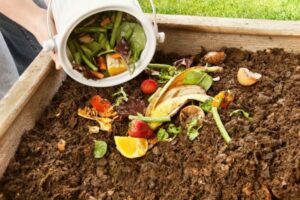
Compost is often referred to as “black gold” in the gardening world, and for good reason. It’s a nutrient-rich, organic matter that results from the decomposition of kitchen scraps, yard waste, and other organic materials. Compost provides a plethora of benefits to your garden, from enriching the soil and improving water retention to promoting healthy plant growth.
Benefits of Compost in Gardening
- Nutrient-Rich Soil Amendment: Compost is loaded with essential plant nutrients, such as nitrogen, phosphorus, and potassium. It also contains various micronutrients that are essential for plant growth.
- Improved Soil Structure: Compost enhances soil structure by increasing its ability to hold moisture, promoting aeration, and preventing soil compaction.
- Microbial Activity: Compost fosters a thriving population of beneficial microorganisms in the soil, which helps with nutrient cycling and disease suppression.
- pH Balance: Compost has a near-neutral pH, which helps to buffer soil acidity and alkalinity, making it suitable for a wide range of plants.
- Weed Suppression: A layer of compost as mulch can help suppress weeds and reduce the need for synthetic herbicides.
Using Compost in Your Garden
- Soil Preparation: Incorporate compost into your garden soil before planting. Mix it thoroughly to a depth of 6-12 inches to ensure that the nutrients are readily available to plant roots.
- Top Dressing: Apply a layer of compost on the soil surface around established plants to provide a slow-release source of nutrients and improve moisture retention.
- Mulch: Use compost as a natural mulch to cover the soil around your plants. This helps retain moisture, suppress weeds, and regulate soil temperature.
- Compost Tea: Steep compost in water to create a liquid fertilizer known as “compost tea.” Use it as a foliar spray or soil drench to deliver nutrients directly to plants.
Creating Your Own Compost
- Choose a Location: Select a suitable location for your compost pile or bin. It should be well-drained, receive some sunlight, and be easily accessible.
- Layer Materials: Composting works best when you layer green materials (kitchen scraps, grass clippings) with brown materials (leaves, straw). Aim for a 2:1 ratio of brown to green materials.
- Aerate: Turn the compost pile regularly to introduce oxygen and speed up decomposition.
- Maintain Moisture: Keep the compost pile consistently moist, similar to a wrung-out sponge.
- Patience: Compost can take several months to a year to fully mature. You’ll know it’s ready when it looks dark and crumbly, and it has an earthy, pleasant odor.
Caution:
- Avoid adding diseased plant material, meat, dairy, and pet waste to your compost, as these can introduce pathogens and pests.
Compost is a gardener’s best friend, enriching the soil, promoting healthy plant growth, and reducing the need for chemical fertilizers. By incorporating compost into your gardening practices and creating your own compost pile, you can harness the power of “black gold” to create a more vibrant and sustainable garden.
Manure
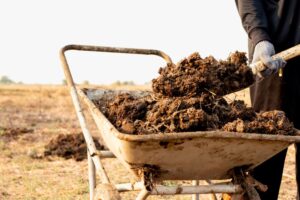
Manure is a time-honored and natural fertilizer and soil conditioner derived from the waste of animals like cattle, horses, chickens, and pigs. It’s been used for centuries to enrich soil and enhance plant growth. Manure is prized for its nutrient content, which includes nitrogen, phosphorus, potassium, and organic matter that improves soil structure and water retention.
Benefits of Manure in Gardening
- Nutrient-Rich: Manure is a valuable source of essential plant nutrients. It typically contains nitrogen, phosphorus, and potassium, along with various micronutrients. These nutrients are crucial for plant growth and development.
- Organic Matter: Manure adds organic matter to the soil, which improves soil structure, promotes beneficial microorganisms, and enhances moisture retention.
- Slow-Release Nutrients: Manure releases nutrients gradually into the soil, providing plants with a consistent source of nutrition over time.
- Enhanced Soil Fertility: Manure helps replenish and maintain soil fertility, making it suitable for repeated cultivation.
- Recycling Organic Waste: Using manure recycles organic waste from livestock operations and reduces the need for synthetic fertilizers.
Types of Manure
- Cow Manure: Cow manure is a balanced source of nutrients and is well-suited for most garden plants.
- Horse Manure: Horse manure is also a good choice for gardens, but it may contain more weed seeds compared to other types.
- Chicken Manure: Chicken manure is high in nitrogen, making it excellent for leafy green vegetables and other crops that require a lot of nitrogen.
- Sheep and Goat Manure: These types of manure are well-balanced and suitable for various garden crops.
Using Manure in Your Garden
- Composting: Composting manure is an excellent way to kill pathogens and weed seeds while creating a nutrient-rich organic material that can be added to the soil.
- Aged or Well-Composted Manure: If you’re using fresh manure, be sure to allow it to age or compost for several months to a year before applying it to your garden. This ensures that it won’t burn your plants and allows pathogens and weed seeds to decompose.
- Incorporating into Soil: Mix well-aged or composted manure into the soil before planting or as a top dressing. The general guideline is to use 1-2 inches of manure for every 100 square feet.
- Liquid Manure Tea: You can steep well-composted manure in water to create a liquid fertilizer or “manure tea” for your garden.
Caution:
- Fresh manure can contain harmful pathogens and may burn plant roots if not aged or composted properly. Avoid using fresh manure on plants that are directly consumed, like root crops.
- Be cautious about using manure from animals that have been treated with medications or antibiotics.
Manure is a valuable and natural resource in organic gardening, offering essential nutrients, organic matter, and soil improvement. When used correctly and with proper aging or composting, manure can significantly enhance the health and productivity of your garden. It’s an eco-friendly and sustainable choice that supports healthy plant growth while promoting responsible recycling of organic waste.
Fish Emulsion
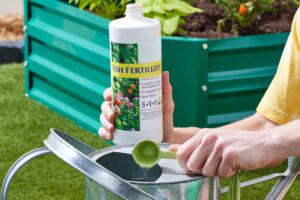
Fish emulsion is a popular and natural liquid fertilizer derived from fish waste and other seafood byproducts. It’s highly valued by gardeners and farmers for its nutrient-rich composition and the benefits it provides to plants. Fish emulsion is an excellent source of essential plant nutrients, particularly nitrogen, and it contributes to robust growth and overall plant health.
Benefits of Fish Emulsion
- Nutrient-Rich: Fish emulsion is packed with essential nutrients, including nitrogen, phosphorus, and potassium (N-P-K). It also contains trace minerals like calcium, sulfur, and magnesium that support plant health and development.
- Quick-Release Nitrogen: The nitrogen in fish emulsion is in a form that’s readily available to plants, making it an ideal choice for promoting vigorous foliage growth.
- Enhanced Soil Microbes: Fish emulsion can promote beneficial soil microorganisms, which contribute to improved soil structure, nutrient cycling, and overall soil health.
- Fast Uptake: Because the nutrients are in liquid form, plants can take them up quickly through their roots and leaves, resulting in rapid growth.
- Organic and Sustainable: Fish emulsion is an eco-friendly and sustainable choice for organic gardening. It’s made from waste products that would otherwise be discarded.
Using Fish Emulsion Fertilizer in Your Garden
- Dilute and Apply: Fish emulsion is typically sold as a concentrate. To use, dilute it with water according to the instructions on the label. It’s usually recommended to use about 1-2 tablespoons of fish emulsion per gallon of water.
- Foliar Spray: You can use fish emulsion as a foliar spray by applying it directly to the leaves of plants. This method allows for fast nutrient uptake. It’s particularly beneficial for plants with nutrient deficiencies.
- Soil Drench: For root application, pour the diluted fish emulsion directly at the base of your plants. This method helps improve soil health and supports root development.
- Frequency: The frequency of application varies depending on the specific needs of your plants. Typically, you can apply fish emulsion every 2-4 weeks during the growing season.
- Starting Seeds: You can use a very diluted fish emulsion solution to water young seedlings and provide them with a gentle nutrient boost.
Caution:
- While fish emulsion is a valuable and natural source of nutrients, avoid over-application. Excessive use can lead to nutrient imbalances, which may harm your plants.
- The smell of fish emulsion can be quite strong, so be prepared for the odor when using it in your garden.
Whether you’re looking to promote lush foliage, enhance soil health, or address nutrient deficiencies, fish emulsion provides a natural and sustainable solution. By using it correctly and in accordance with recommended guidelines, you can improve plant health, boost growth, and enjoy the rewards of a thriving garden.
Bone Meal
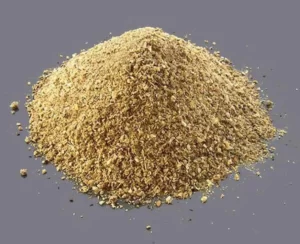
Bone meal is a valuable and natural soil amendment used in gardening and agriculture to enrich soil with essential nutrients, primarily phosphorus and calcium. It is made from ground and finely crushed bones, typically from cattle or other livestock. Bone meal is highly regarded for its ability to enhance root development, flowering, and fruiting in plants.
Benefits of Bone Meal
- Phosphorus Enrichment: Bone meal is a rich source of phosphorus, one of the primary macronutrients essential for plant growth. Phosphorus plays a crucial role in root development, energy transfer within plants, and flowering and fruiting.
- Calcium Contribution: Bone meal also provides calcium, which is vital for cell wall structure in plants and helps prevent common issues like blossom end rot in tomatoes.
- Slow-Release Nutrient: Bone meal releases nutrients gradually into the soil, ensuring a steady supply of phosphorus over an extended period, which is particularly beneficial for plants that require phosphorus throughout their growth cycle.
- pH Neutral: Bone meal is pH neutral, making it suitable for most soil types and plant varieties.
Using Bone Meal in Your Garden
- Incorporating into Soil: Before planting, work bone meal into the soil to a depth of 6-8 inches. This ensures that the phosphorus is available to plant roots. The general guideline is to use 2-4 pounds of bone meal per 100 square feet.
- Transplanting: When transplanting seedlings or established plants, place a small amount of bone meal in the planting hole to encourage strong root development.
- Flowering and Fruit Production: Apply bone meal to plants that are known for their flowering and fruiting stages, such as tomatoes and peppers, to boost their productivity.
- Bulb Planting: Bone meal is a great addition when planting flower bulbs. Sprinkle a small amount in the planting hole to promote healthy bulb development and future blooms.
Caution:
- Bone meal is a valuable and natural source of nutrients, but it should be used judiciously. Over-application can lead to excessive phosphorus levels in the soil, which may affect nutrient balance and water quality.
- Bone meal may attract certain animals, such as dogs, raccoons, or rodents, due to its odor. Use caution when applying it to prevent these animals from digging in the garden.
- Be mindful of the source of bone meal. Ensure it is produced from a reputable source and free of contaminants.
By using bone meal correctly and in accordance with recommended guidelines, you can improve plant health and productivity while maintaining a balanced and nutrient-rich garden.
Blood Meal
Blood meal is a potent and natural source of nitrogen that has been a staple in organic gardening for years. It is made from the dried and powdered blood of livestock, usually cattle. Blood meal is prized for its high nitrogen content and its ability to promote vigorous plant growth, particularly in nitrogen-hungry plants like leafy greens and lawns.
Benefits of Blood Meal
- High Nitrogen Content: Blood meal is rich in nitrogen, an essential nutrient for plant growth. Nitrogen is a vital component of proteins, enzymes, and chlorophyll, making it crucial for overall plant health.
- Quick Release: One of the advantages of blood meal is that it releases nitrogen relatively quickly into the soil, providing a fast nutrient boost to plants.
- Acid-Neutral: Blood meal is neutral in pH, making it suitable for most garden plants. It doesn’t have the alkalizing effect that some other soil amendments can have.
- Deters Pests: The strong odor of blood meal can deter some garden pests, such as deer and rabbits, from feeding on your plants.
Using Blood Meal in Your Garden
- As a Fertilizer: Blood meal is often used as a natural fertilizer to provide a quick nitrogen boost to plants. Apply it to the soil according to package instructions. It’s particularly effective for leafy greens like lettuce, spinach, and cabbage.
- Compost Amendment: Adding blood meal to your compost pile can accelerate the decomposition process and enrich the compost with valuable nutrients. It’s an excellent addition when you have a lot of high-carbon materials like leaves or straw in your compost.
- Lawn Care: Blood meal can be used to promote lush, green lawns. Apply it as a top dressing at a rate of 1-4 pounds per 1000 square feet of lawn. Water it in after application.
Caution:
- While blood meal is an effective and natural source of nitrogen, it should be used with care and according to package instructions. Overuse can lead to excessive nitrogen levels, which may harm plants and contaminate groundwater.
- Blood meal can attract predators like dogs, raccoons, and skunks due to its strong odor. Be cautious when using it in areas with these animals.
- Ensure that you store blood meal in a secure container to prevent pests from getting to it.
Whether you’re looking to enhance the growth of leafy greens, promote a lush lawn, or accelerate compost decomposition, blood meal can be a useful addition to your gardening toolkit. Just remember to use it judiciously and in accordance with recommended guidelines to maximize its benefits while maintaining a healthy garden.
Green Manure
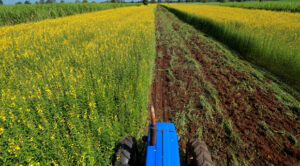
Green manure, often referred to as cover crops, is a sustainable and organic gardening practice that involves growing specific plants to improve soil health, fertility, and structure. These cover crops offer various benefits, such as adding nutrients, preventing soil erosion, suppressing weeds, and promoting beneficial microorganisms.
Benefits of Green Manure
- Nutrient Enrichment: Green manure crops capture and store essential nutrients from the soil, making them available to subsequent crops when the cover crop is incorporated into the soil.
- Organic Matter: The biomass of green manure plants adds organic matter to the soil, enhancing soil structure, moisture retention, and aeration.
- Weed Suppression: Cover crops can smother and outcompete weeds, reducing the need for synthetic herbicides.
- Erosion Control: The root systems of cover crops help prevent soil erosion by stabilizing the soil structure and reducing surface runoff.
- Pest and Disease Management: Certain cover crops can suppress soil-borne pests and diseases through allelopathy (chemical inhibition) and by promoting beneficial microorganisms.
Popular Green Manure Cover Crops
- Legumes: Leguminous cover crops like clover, vetch, and beans have the unique ability to fix nitrogen from the air into the soil. This natural nitrogen enrichment benefits subsequent crops.
- Grasses: Grasses such as rye, oats, and barley are excellent for adding organic matter to the soil, suppressing weeds, and improving soil structure.
- Mustard: Mustard cover crops like oilseed radishes release natural compounds that can help reduce soil-borne pests and diseases.
- Buckwheat: Buckwheat is a fast-growing cover crop that can improve soil structure and is effective at smothering weeds.
How to Use Green Manure
- Planting: Select the appropriate cover crop for your garden’s needs and growing conditions. Sow the seeds according to the recommended planting time and density.
- Growth: Allow the cover crop to grow and develop, typically for several weeks to a few months, depending on the type of cover crop.
- Incorporation: When the cover crop reaches the appropriate growth stage, incorporate it into the soil. This can be done by tilling, mowing, or simply cutting down the plants and leaving them on the surface as mulch.
- Rest Period: Allow the incorporated cover crop to decompose for a few weeks before planting your main crops. This decomposition releases nutrients and improves soil structure.
Caution:
- Be cautious with cover crops like clover or vetch, as they can become invasive in certain regions. Research local recommendations to select cover crops suitable for your area.
- Some cover crops may harbor pests or diseases that could affect your main crops. Be aware of these potential issues and select cover crops accordingly.
By using cover crops strategically, you can improve soil fertility, structure, and overall garden productivity while reducing the need for synthetic fertilizers and herbicides. Experiment with different cover crops to see which ones work best for your specific gardening needs.
Seaweed and Kelp
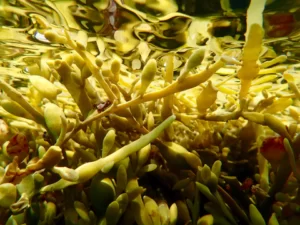
Seaweed and kelp, often referred to as sea vegetables, are becoming increasingly popular in organic gardening due to their remarkable benefits for plant health and soil improvement. These marine plants are packed with essential nutrients and growth-enhancing compounds that can significantly boost your garden’s productivity.
Benefits of Seaweed and Kelp in Gardening
- Nutrient-Rich: Seaweed and kelp are rich sources of essential plant nutrients, including nitrogen, potassium, phosphorus, and trace minerals such as iron, zinc, and magnesium. These nutrients are crucial for plant growth, flowering, and fruiting.
- Growth Hormones: Sea vegetables contain natural growth-promoting hormones, such as cytokinins, auxins, and gibberellins, which stimulate cell division and elongation. This can lead to increased root development and overall plant growth.
- Improved Stress Tolerance: The compounds in seaweed and kelp help plants become more resistant to environmental stressors like drought, heat, and disease, contributing to healthier, more resilient plants.
- Enhanced Nutrient Uptake: The presence of alginic acid in seaweed and kelp improves the soil’s ability to retain nutrients, making them more accessible to plants. This can result in better nutrient absorption.
- Bio-stimulants: Sea vegetables function as bio-stimulants, promoting the development of beneficial microorganisms in the soil. These microorganisms contribute to improved soil structure and nutrient cycling.
Using Seaweed and Kelp in Your Garden
- Liquid Fertilizer: One of the most common ways to use seaweed and kelp is by creating a liquid fertilizer. You can purchase liquid seaweed or kelp extract or make your own by steeping dried seaweed or kelp in water. Apply it as a foliar spray or root drench.
- Powder or Granules: Dried seaweed and kelp are available in powdered or granulated forms. You can apply these directly to the soil or use them as a top dressing.
- Soil Amendment: Mix dried seaweed or kelp into your garden soil when preparing beds or planting. This ensures a slow release of nutrients and growth-promoting compounds.
- Compost Enhancer: Adding dried seaweed or kelp to your compost pile enriches the compost with essential nutrients and bio-stimulants.
- Seed Treatment: Soak seeds in a diluted seaweed or kelp solution before planting to encourage faster germination and healthier seedlings.
Caution:
- While seaweed and kelp are generally safe for plants, use them in moderation. Excessive use can lead to imbalances in soil nutrient levels.
- Be mindful of the source and processing of seaweed and kelp products. It’s best to choose products that are sustainably harvested and minimally processed.
Seaweed and kelp are natural powerhouses of nutrients and growth enhancers that can significantly benefit your garden. By incorporating these sea vegetables into your gardening routine, you can improve plant health, increase yields, and create a more resilient and vibrant garden. Whether you prefer liquid extracts, dried forms, or homemade preparations, seaweed and kelp can be a valuable addition to your gardening toolkit.
Epsom Salt
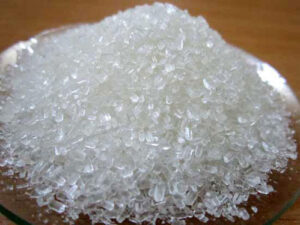
Epsom salt, chemically known as magnesium sulfate (MgSO4), is a versatile and cost-effective natural product that has gained popularity among gardeners for its numerous benefits in plant care and soil improvement. Epsom salt provides essential nutrients to plants, corrects nutrient deficiencies, and contributes to healthier, more productive gardens.
Benefits of Epsom Salt in Gardening:
- Magnesium Source: Epsom salt is rich in magnesium, an essential nutrient for plant growth. Magnesium plays a vital role in photosynthesis, the production of chlorophyll, and overall plant health.
- Sulfur Supplement: Epsom salt also contains sulfur, which is crucial for the development of enzymes, amino acids, and proteins in plants.
- Nutrient Absorption: Epsom salt enhances the uptake of essential nutrients like nitrogen, phosphorus, and iron, making it easier for plants to absorb these nutrients from the soil.
- Balanced Growth: The added magnesium helps balance the ratio of nutrients in the soil, preventing or correcting nutrient deficiencies that can lead to yellowing leaves and poor growth.
- Improved Seed Germination: Epsom salt can promote better seed germination when used as a soil conditioner.
Using Epsom Salt in Your Garden
- As a Soil Amendment: Incorporate Epsom salt into the soil before planting or as a top dressing. Mix it into the soil to a depth of 1-2 inches. The general guideline is 1-2 tablespoons of Epsom salt per square foot for new plantings.
- For Roses: Epsom salt is particularly beneficial for roses. Sprinkle a tablespoon of Epsom salt around the base of each rose plant in early spring and again in late spring.
- For Tomatoes: Tomatoes can benefit from Epsom salt to prevent blossom end rot. Apply a tablespoon of Epsom salt at the base of each tomato plant during planting and as a side dressing every two weeks.
- For Houseplants: Houseplants can also benefit from Epsom salt. Dissolve a teaspoon of Epsom salt in a gallon of water, and use it to water your houseplants every 2-4 weeks.
- Foliar Spray: You can create a foliar spray by dissolving 2 tablespoons of Epsom salt in a gallon of water. Spray the mixture on the leaves of plants with magnesium deficiency.
Caution:
- Use Epsom salt as directed and avoid excessive application. Overuse can lead to magnesium buildup in the soil.
- While Epsom salt is beneficial for many plants, it may not be needed in soils already rich in magnesium. It’s a good practice to perform a soil test before applying.
Epsom salt is a versatile and affordable natural product that can benefit your garden by providing essential nutrients, promoting nutrient absorption, and correcting deficiencies. By using Epsom salt strategically and in moderation, you can enhance the health and productivity of your garden, resulting in lush, thriving plants and vibrant blooms.
Wood Ash
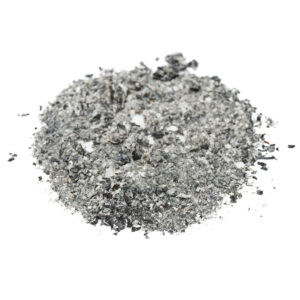
Wood ash, the residue left after burning wood, can be a valuable resource in the garden. For centuries, gardeners have used wood ash as a natural fertilizer and soil amendment. It’s rich in nutrients and offers several benefits for plant growth and soil improvement.
Benefits of Wood Ash
- Provides Nutrients: Wood ash is a good source of essential plant nutrients, including potassium (potash), calcium, and small amounts of magnesium and phosphorus. Potassium is essential for overall plant health, flowering, and fruiting.
- Raises Soil pH: Wood ash is alkaline and can help raise the pH of acidic soils, making them more neutral. This is beneficial for plants that thrive in neutral to slightly alkaline conditions.
- Enhances Soil Structure: When incorporated into the soil, wood ash can help improve soil structure. It has a liming effect, which means it can break up heavy clay soils and promote better drainage.
- Deters Pests: Wood ash can deter some garden pests, such as slugs and snails, when sprinkled around susceptible plants. It creates a dry and abrasive barrier that these pests are reluctant to cross.
- Accelerates Composting: Adding wood ash to your compost pile can help speed up decomposition by providing a source of nutrients and adjusting the pH to a more neutral range.
Using Wood Ash in Your Garden
- Incorporating into Soil: Mix wood ash into the soil before planting to improve its nutrient content and pH. Be cautious not to overapply, as excessive use can make soil too alkaline.
- Top Dressing: You can sprinkle wood ash on the soil surface around established plants. However, be mindful not to apply too much, as it may harm some plants or disrupt the pH balance in the soil.
- Composting: Add wood ash to your compost pile in moderation to enhance decomposition. Avoid adding ash from treated or painted wood, as it may contain harmful chemicals.
- Lawn Fertilization: If your lawn requires a boost of potassium and calcium, spreading a thin layer of wood ash can be beneficial. Make sure to evenly distribute it to avoid creating patches of concentrated ash.
Caution:
While wood ash offers numerous benefits, it should be used with care:
- Don’t Use Treated or Painted Wood Ash: Wood from construction or treated with chemicals should not be burned or used in the garden, as it can contain harmful substances.
- Avoid Overapplication: Excessive use of wood ash can raise soil pH to levels unsuitable for most plants. Test your soil’s pH before applying to determine if it’s needed.
- Keep Away from Acid-Loving Plants: Wood ash is not suitable for acid-loving plants like blueberries, azaleas, and rhododendrons, as it can disrupt their preferred acidic soil conditions.
Wood ash can be a valuable resource in your garden when used in moderation and with an understanding of its effects. It provides essential nutrients, raises soil pH, and enhances soil structure, making it a useful tool for promoting healthy plant growth. By using wood ash wisely, you can enjoy the benefits it offers while maintaining a balanced and productive garden.
Alfalfa Meal
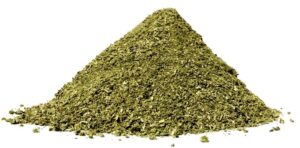
Alfalfa meal is a natural and organic fertilizer that has gained popularity among gardeners and farmers for its nutrient-rich properties and soil-improving benefits. It is made from the dried and ground leaves, stems, and flowers of the alfalfa plant (Medicago sativa), a leguminous plant commonly used as livestock feed. Alfalfa meal is a valuable addition to your garden because it provides essential nutrients and enhances soil health.
Benefits of Alfalfa Meal
- Rich in Nutrients: Alfalfa meal is a potent source of essential plant nutrients. It is particularly high in nitrogen, making it a great choice for promoting lush foliage and overall plant growth. It also contains significant amounts of phosphorus and potassium, which are essential for root development and flowering.
- Slow-Release Nutrients: Alfalfa meal releases nutrients slowly over time. This slow-release characteristic ensures that your plants receive a steady and consistent supply of nutrition, reducing the risk of over-fertilization and nutrient runoff.
- Improved Soil Structure: When used as a soil conditioner, alfalfa meal helps improve soil structure. Its fibrous nature enhances soil aeration and water retention, making it ideal for improving heavy clay soils and promoting healthy root development.
- Enhanced Microbial Activity: Alfalfa meal supports beneficial soil microorganisms. These microorganisms break down organic matter, releasing nutrients in a form that plants can readily absorb.
- pH Adjustment: Alfalfa meal is slightly alkaline, which can help raise the pH of acidic soils, making them more neutral. This is beneficial for plants that thrive in neutral to slightly alkaline conditions.
Using Alfalfa Meal in Your Garden
- Incorporating into Soil: To enrich your garden soil, mix alfalfa meal into the soil before planting. Use a garden fork or tiller to work it into the top 6-8 inches of the soil. A general guideline is to apply 5-10 pounds of alfalfa meal per 100 square feet of garden space.
- Top Dressing: You can sprinkle alfalfa meal on the soil surface around established plants. Gently scratch it into the top layer of soil to encourage slow nutrient release.
- Composting: Alfalfa meal is an excellent addition to compost piles. It provides nitrogen to help break down organic materials and enrich the resulting compost with essential nutrients.
- Foliar Spray: You can make a liquid fertilizer by steeping alfalfa meal in water. After a few days, strain the liquid and use it as a foliar spray to feed plants directly through their leaves.
- Seed Starting Mix: Incorporate alfalfa meal into your seed starting mix to provide a nutrient-rich environment for young seedlings.
Caution:
While alfalfa meal is generally safe for use in organic gardening, it can attract rabbits due to its odor. If you have a rabbit problem in your area, take precautions to protect your plants.
Alfalfa meal is a versatile and valuable addition to your gardening toolkit. Its nutrient-rich composition, slow-release properties, and ability to improve soil structure make it an excellent choice for promoting healthy, vibrant plants in your garden. Whether you’re growing vegetables, flowers, or ornamental plants, consider using alfalfa meal to support their growth and overall well-being.
Bottom Line
When using natural fertilizers in your organic garden, it’s essential to follow recommended application rates and consider the specific needs of your plants. These natural fertilizers not only provide essential nutrients but also improve soil structure, water retention, and overall soil health. Embrace the principles of organic gardening, and your garden will thrive in harmony with nature.


